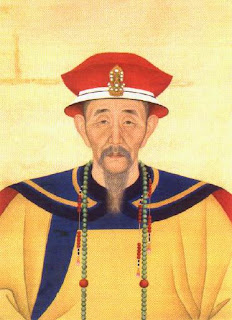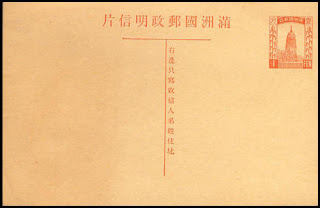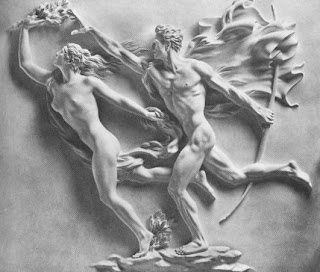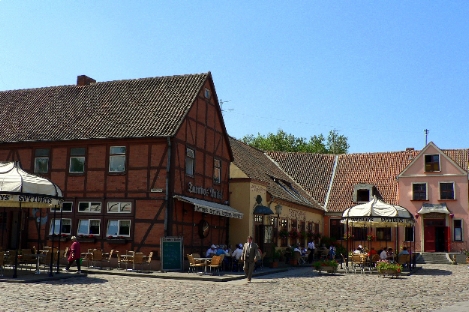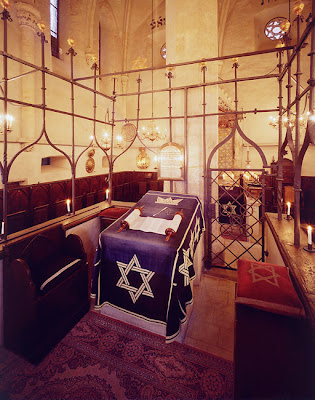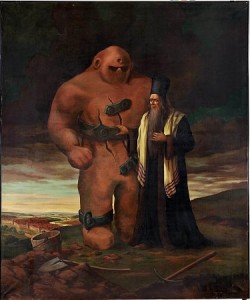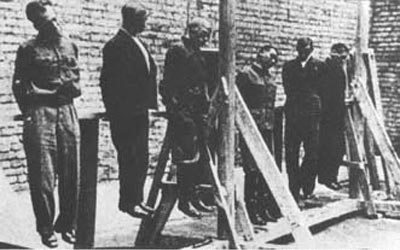Carroll Quigley (1910-1977) was an American historian and theorist of the evolution of civilizations. He was a professor at Georgetown University. Quigley’s views on the middle class are mostly in his massive work Tragedy and Hope : A History of the World in Our Time. He was also different from mainstream academicians in one respect : Quigley repeatedly stressed that secret societies have a major role to play in history. This has made Quigley a favorite amongst conspiracy theorists.
Quigley says that the middle class are a group of people that “intruded” between the “upper class of nobles and upper clergy” and the “great mass of peasants”. This group suffers from “psychic insecurity founded on the lack of secure social status”, an insecurity that can only be relieved by “insatiable material acquisition”. As the medieval feudal fiefs coalesced into principalities, which gradually turned into dynastic monarchies, and finally transformed into modern nation states, the middle class has been particularly keen to base their loyalty to the state on nationalism. The middle class underwent two major changes in America during the last century. First, it learnt that the overriding problems of the economy are not savings and investment, but consumption and distribution. Secondly, the Puritan doctrine of strict discipline of children gave way to the view that children should be left undisciplined to enable their innate goodness to manifest itself.
The institution of marriage also changed in the twentieth century. Spurred on by the media, housewives in middle class homes were led to imagine a world of ‘romantic and carefree housewives with dazzling homes and well-behaved and well-scrubbed children’. Unfortunately, this nirvana was unachievable. Hence, the wife relieves her frustration by goading her husband on to become a better provided of sustenance and domestic bliss. This is usually perceived by the husband, who realizes the impracticability of meeting this sort of demands, as nagging.
Advances in healthcare meant that women were no longer dying in great numbers during childbirth. They began to live as long, or even longer, than men. This has resulted in dramatic acceleration of the transfer of wealth from male to female. The frustrations and tensions of domestic life leads more men to become addicted to work, rather addicted to overwork. And this inevitably leads to overindulgence in tobacco, alcohol, and hyperactive stress. All of which lead to early death. Only, in these cases, it would more appropriately be called suicide.
In the 20th century, boys and girls have increasingly been reared in a similar fashion. In fact, because of the new hairstyles and clothing, it became often increasingly difficult to tell which young person belongs to which gender.
Co-education, which became more and more in vogue in the last century, led to the victimization of boys. Generally more gregarious and confident in themselves, girls adjust to school more easily than boys. The increase in female teachers compounded the problem, because they favored their own sex and also promoted the study habits that come more naturally to girls. All this resulted making the boys more indecisive, hesitant, and dependent.
In effect, the middle class rejects the classical New Testament values of love, charity and unselfishness. It instead glorifies the modern ideals of decisiveness, selfishness, impersonality, ruthless energy, and insatiable ambition. The middle class depends on commerce and has an inbuilt state of psychic insecurity through its lack of status and permanence. It sees the world as a place where the total amount of wealth is fixed, and one man’s gain is another’s loss. Life is a struggle to the death in order to compete for this limited quantity of wealth and social status.
The entry of this middle class into the circles of social status and position earlier occupied by the aristocratic nobility led to a totally new attitude in education. The earlier aim of education, that is, to ‘educate’, has been replaced by the aim to crowd-out the competition. Whereas the aristocrat would compete for the sake of the school or the team, the new middle class competes “for more personal reasons, with much greater intensity, even fanaticism, and play to excel and to distinguish themselves from others”. Quigley takes the example of the physicians, who “became one of the largest groups of hardheaded, petty bourgeois hustlers in the United States, and their professional association became the most ruthless, materialistic lobbying association of any professional group”.
Quigley says that the middle class are a group of people that “intruded” between the “upper class of nobles and upper clergy” and the “great mass of peasants”. This group suffers from “psychic insecurity founded on the lack of secure social status”, an insecurity that can only be relieved by “insatiable material acquisition”. As the medieval feudal fiefs coalesced into principalities, which gradually turned into dynastic monarchies, and finally transformed into modern nation states, the middle class has been particularly keen to base their loyalty to the state on nationalism. The middle class underwent two major changes in America during the last century. First, it learnt that the overriding problems of the economy are not savings and investment, but consumption and distribution. Secondly, the Puritan doctrine of strict discipline of children gave way to the view that children should be left undisciplined to enable their innate goodness to manifest itself.
The institution of marriage also changed in the twentieth century. Spurred on by the media, housewives in middle class homes were led to imagine a world of ‘romantic and carefree housewives with dazzling homes and well-behaved and well-scrubbed children’. Unfortunately, this nirvana was unachievable. Hence, the wife relieves her frustration by goading her husband on to become a better provided of sustenance and domestic bliss. This is usually perceived by the husband, who realizes the impracticability of meeting this sort of demands, as nagging.
Advances in healthcare meant that women were no longer dying in great numbers during childbirth. They began to live as long, or even longer, than men. This has resulted in dramatic acceleration of the transfer of wealth from male to female. The frustrations and tensions of domestic life leads more men to become addicted to work, rather addicted to overwork. And this inevitably leads to overindulgence in tobacco, alcohol, and hyperactive stress. All of which lead to early death. Only, in these cases, it would more appropriately be called suicide.
In the 20th century, boys and girls have increasingly been reared in a similar fashion. In fact, because of the new hairstyles and clothing, it became often increasingly difficult to tell which young person belongs to which gender.
Co-education, which became more and more in vogue in the last century, led to the victimization of boys. Generally more gregarious and confident in themselves, girls adjust to school more easily than boys. The increase in female teachers compounded the problem, because they favored their own sex and also promoted the study habits that come more naturally to girls. All this resulted making the boys more indecisive, hesitant, and dependent.
In effect, the middle class rejects the classical New Testament values of love, charity and unselfishness. It instead glorifies the modern ideals of decisiveness, selfishness, impersonality, ruthless energy, and insatiable ambition. The middle class depends on commerce and has an inbuilt state of psychic insecurity through its lack of status and permanence. It sees the world as a place where the total amount of wealth is fixed, and one man’s gain is another’s loss. Life is a struggle to the death in order to compete for this limited quantity of wealth and social status.
The entry of this middle class into the circles of social status and position earlier occupied by the aristocratic nobility led to a totally new attitude in education. The earlier aim of education, that is, to ‘educate’, has been replaced by the aim to crowd-out the competition. Whereas the aristocrat would compete for the sake of the school or the team, the new middle class competes “for more personal reasons, with much greater intensity, even fanaticism, and play to excel and to distinguish themselves from others”. Quigley takes the example of the physicians, who “became one of the largest groups of hardheaded, petty bourgeois hustlers in the United States, and their professional association became the most ruthless, materialistic lobbying association of any professional group”.

